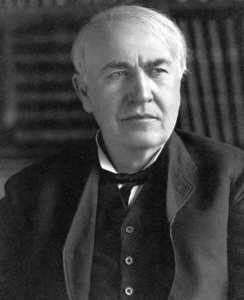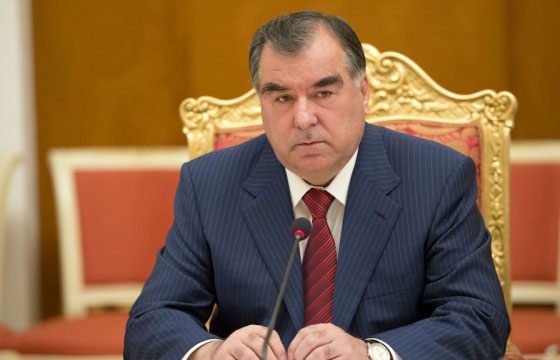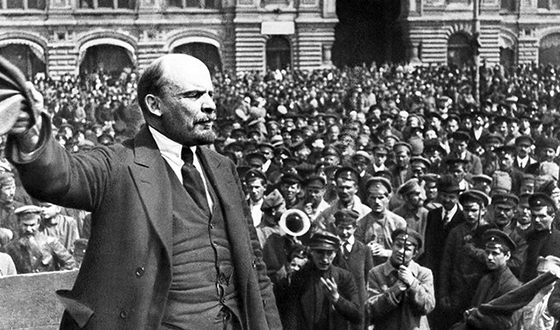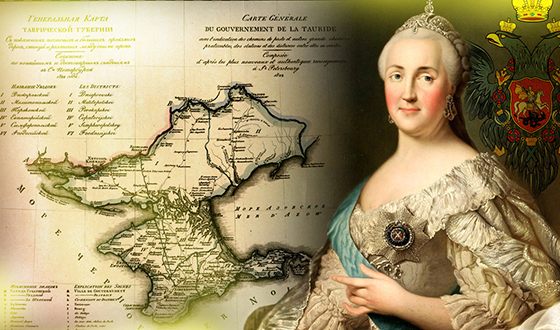Thomas Edison
 The name of the famous American inventor, a talented 19th century entrepreneur, the founder of several large electrical companies Thomas Edison is inextricably linked to a number of great inventions that have not lost their significance and relevance in our modern world. On account of the great experimenter more than a thousand inventions in various fields of electrical engineering. Only in America, Edison received 1093 patents for his inventions. In addition, there were more than 1,200 patents granted in Germany, France, and England. So much did not get anyone else in the whole world history. Although not all of his inventions were unique and he often had to sue the inventors, who claimed that Edison “borrowed” their ideas. Edison did not seek to conquer the summits of fundamental science. He stood firmly on his feet and understood that it would not bring him profit. Not a scientist, but a businessman and a great experimenter, he managed to put science on a commercial path and find practical application to a huge number of scientific inventions and achievements. A future genius was born on February 11, 1847 in the small town of Mailana, Ohio. Thomas was the seventh child in a fairly wealthy family of roofing shingles. When the boy was 7 years old, the family was forced to move to Port Huron, Michigan, because of the bankruptcy of his father. In school, Edison studied for no more than 3 months. After the teacher spoke rudely about Thomas’s abilities, the mother, the former teacher, continued to teach her son at home. Due to the scarlet fever suffered in childhood, Edison started hearing problems early. He reads a lot and enjoys chemistry, he even built his first laboratory in the basement, where he conducted chemical experiments. During these years, the Edison family lived quite modestly. To help his mother, and also to have money for his experiments, at the age of 12, Thomas has been selling sweets and newspapers on the train. At his disposal was a free baggage car, where he arranged a chemical laboratory. At 15, he accidentally acquired a printing press, which he immediately installed in the baggage car and proceeded to release his newspaper, successfully selling it to passengers. From 1863, Edison began working as a telegraph operator, where he was arranged by the grateful father of a three-year-old boy whom Thomas literally snatched from under the wheels of a train. Over the next five years, Edison worked as a telegraphist, devoting all his free time to reading and various experiments. In 1869, he received the first patent for his invention; he became an electric registrar of votes, which could be used for ballots. There were no patent buyers, which prompted Edison to continue to pursue inventions for which there will be guaranteed demand. Already at the end of 1870, he received a large sum for the exchange ticker he had created – the telegraph, which transmitted stock quotes. After purchasing a workshop in Newark, he is engaged in the production of tickers and the development of quadruplex telegraph. Later, he managed to profitably sell this development, and the money he invested in the creation in 1876 of the Menlopark laboratory (New Jersey). It was a prototype of the current industrial research laboratories. It was well equipped and very talented employees worked in it, most of the developments of which found practical application. The main goal of the company was innovation, the invention of new and the improvement of existing technologies for commercial purposes. The first product released from the laboratory (1877–1878) was a coal telephone microphone. By the telephone invented by Bell, T. Edison added an induction coil and a carbon microphone, which increased the volume and clarity of the Bell apparatus. Edison was able to prove to the patent bureau that the design he proposed was original and received 300 thousand dollars for it. One of the most famous inventions of Edison was the electric light bulb, which he began industrial introduction in 1878. Despite the fact that its prototype was created seventy years earlier by the Englishman Humphrey Devi, it was Edison who invented the standard base and improved the spiral in the lamp, which greatly extended its service life. By the way, almost simultaneously with Edison, the Russian inventor A. Yablochkov invented a light bulb, but he didn’t finish his development. While Edison in 1882 managed to build the first central power station, he invented a transformer and the necessary equipment for the system and covered two whole quarters in New York, clearly demonstrating the enormous value and benefit of his invention and the importance of its practical application. Along with the incandescent lamp, one of Edison’s main inventions is the phonograph, which he patented on February 19, 1878. Later he was given another 80 patents as a result of the improvement of the phonograph. In 1875, Edison invented a way to transfer words and images to paper, which was called the screen printing method.
The name of the famous American inventor, a talented 19th century entrepreneur, the founder of several large electrical companies Thomas Edison is inextricably linked to a number of great inventions that have not lost their significance and relevance in our modern world. On account of the great experimenter more than a thousand inventions in various fields of electrical engineering. Only in America, Edison received 1093 patents for his inventions. In addition, there were more than 1,200 patents granted in Germany, France, and England. So much did not get anyone else in the whole world history. Although not all of his inventions were unique and he often had to sue the inventors, who claimed that Edison “borrowed” their ideas. Edison did not seek to conquer the summits of fundamental science. He stood firmly on his feet and understood that it would not bring him profit. Not a scientist, but a businessman and a great experimenter, he managed to put science on a commercial path and find practical application to a huge number of scientific inventions and achievements. A future genius was born on February 11, 1847 in the small town of Mailana, Ohio. Thomas was the seventh child in a fairly wealthy family of roofing shingles. When the boy was 7 years old, the family was forced to move to Port Huron, Michigan, because of the bankruptcy of his father. In school, Edison studied for no more than 3 months. After the teacher spoke rudely about Thomas’s abilities, the mother, the former teacher, continued to teach her son at home. Due to the scarlet fever suffered in childhood, Edison started hearing problems early. He reads a lot and enjoys chemistry, he even built his first laboratory in the basement, where he conducted chemical experiments. During these years, the Edison family lived quite modestly. To help his mother, and also to have money for his experiments, at the age of 12, Thomas has been selling sweets and newspapers on the train. At his disposal was a free baggage car, where he arranged a chemical laboratory. At 15, he accidentally acquired a printing press, which he immediately installed in the baggage car and proceeded to release his newspaper, successfully selling it to passengers. From 1863, Edison began working as a telegraph operator, where he was arranged by the grateful father of a three-year-old boy whom Thomas literally snatched from under the wheels of a train. Over the next five years, Edison worked as a telegraphist, devoting all his free time to reading and various experiments. In 1869, he received the first patent for his invention; he became an electric registrar of votes, which could be used for ballots. There were no patent buyers, which prompted Edison to continue to pursue inventions for which there will be guaranteed demand. Already at the end of 1870, he received a large sum for the exchange ticker he had created – the telegraph, which transmitted stock quotes. After purchasing a workshop in Newark, he is engaged in the production of tickers and the development of quadruplex telegraph. Later, he managed to profitably sell this development, and the money he invested in the creation in 1876 of the Menlopark laboratory (New Jersey). It was a prototype of the current industrial research laboratories. It was well equipped and very talented employees worked in it, most of the developments of which found practical application. The main goal of the company was innovation, the invention of new and the improvement of existing technologies for commercial purposes. The first product released from the laboratory (1877–1878) was a coal telephone microphone. By the telephone invented by Bell, T. Edison added an induction coil and a carbon microphone, which increased the volume and clarity of the Bell apparatus. Edison was able to prove to the patent bureau that the design he proposed was original and received 300 thousand dollars for it. One of the most famous inventions of Edison was the electric light bulb, which he began industrial introduction in 1878. Despite the fact that its prototype was created seventy years earlier by the Englishman Humphrey Devi, it was Edison who invented the standard base and improved the spiral in the lamp, which greatly extended its service life. By the way, almost simultaneously with Edison, the Russian inventor A. Yablochkov invented a light bulb, but he didn’t finish his development. While Edison in 1882 managed to build the first central power station, he invented a transformer and the necessary equipment for the system and covered two whole quarters in New York, clearly demonstrating the enormous value and benefit of his invention and the importance of its practical application. Along with the incandescent lamp, one of Edison’s main inventions is the phonograph, which he patented on February 19, 1878. Later he was given another 80 patents as a result of the improvement of the phonograph. In 1875, Edison invented a way to transfer words and images to paper, which was called the screen printing method.



